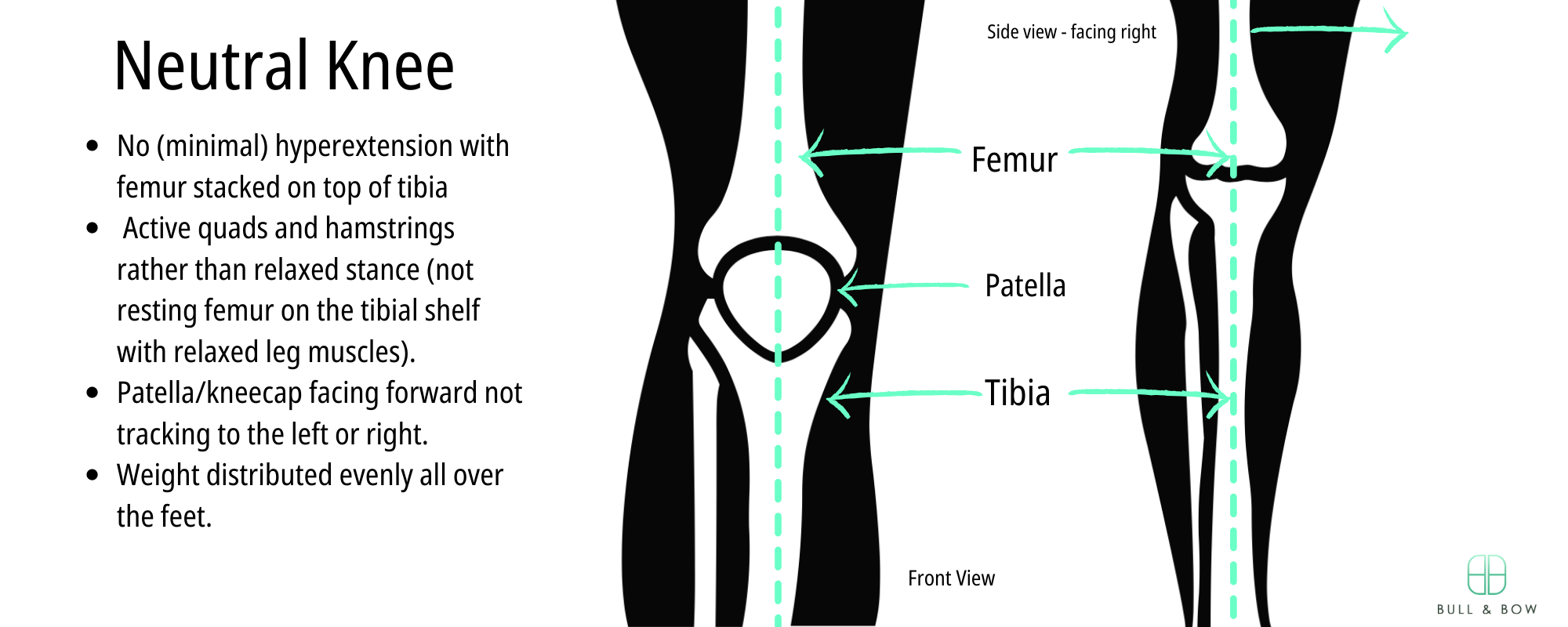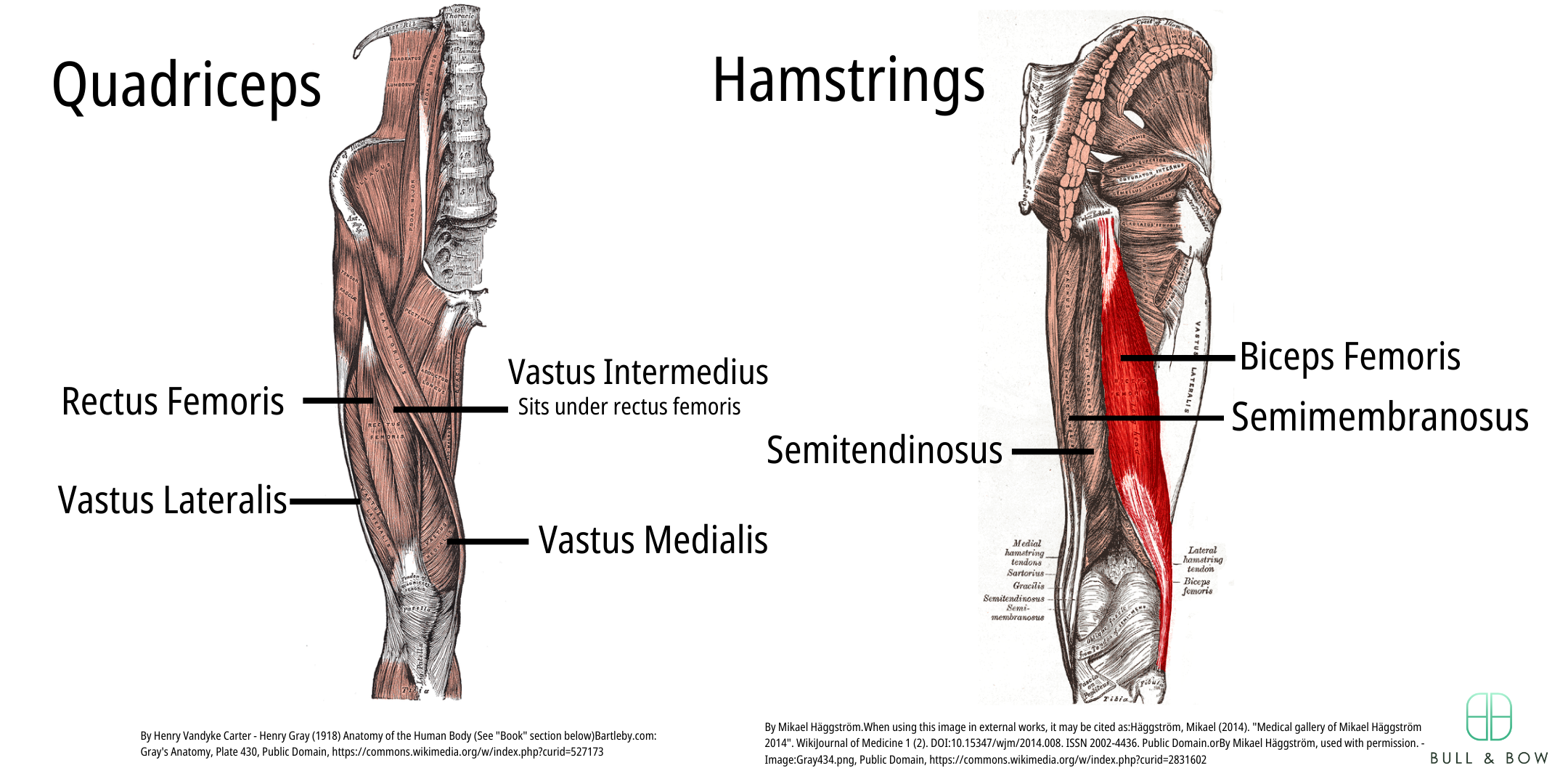From a Bikram yoga perspective, what exactly is meant by 'lock your knee'? There are a few different definitions of a locked knee so it can be confusing to understand exactly what you are meant to do with this instruction. If in your hot yoga practice you have ever wondered ‘what lamp-post"? "concrete, how?" How can I lock 'no knee'? then read on!

Firstly, what a locked knee isn't. Let's cross this off from the start. Medically speaking a knee lock is what happens when your knee joint becomes stuck and won't move. Most often this is when a bone fragment, cartilage from a torn meniscus or other foreign body gets trapped within the knee joint. It locks and will not bend or stays bent unable to straighten. This injury requires medical attention and is definitely not what you want to do in standing head to knee pose! More about this acute injury here.
Secondly, simply pushing your knee backward as far as you can does not qualify as locking your knee. This is hyperextension of the knee joint. It may not cause you an acute injury but it is certainly not what you are aiming for in your hot yoga practice.
Knee Joint Alignment - Neutral Knee
In yoga, a locked knee refers to alignment of the knee to ensure the stability of the total joint. The bone structure alone is quite weak so we rely heavily on the surrounding muscles and ligaments to keep the knee joint stable. Instead of saying 'lock the knee' imagine replacing this phrase with 'engage neutral knee'. This, in a perfect world, would be your leg in a straight 180 degree line with the bones neatly stacked on top of each other. In reality we are all individual beautiful snowflakes and most of us have some level of hyperextension (how far past 180 degrees our knee joint extends)- on average up to six percent. You can read more about the normal range of hyperextension here. Aim for the 180 degree straight line minimising hyperextension and get ready to engage the muscles.

Figure 1. Neutral knee.
How do I lift my kneecap up?
The main job required of your kneecap is to protect the quadriceps tendon. This tendon extends from your quadriceps muscles and over the knee and down to your shin bone. It should glide smoothly straight up and down but can get pulled over to the side which causes misalignment of your knees. Look carefully at your knees in the mirror in class. Are they facing straight ahead? Now contract your quadriceps, the thigh muscles that 'lift' your kneecaps up slightly. Look again and check that your kneecaps aren't moving to the side at all but are still facing forwards.
Contract all four quadriceps.....
If your kneecaps are sliding outwards slightly one way to keep them straight is when you hear 'contract your thighs' think 'contract all four quadriceps'. We have four quadricep muscles (hence quads!) and you need to engage all of them while maintaining your neutral knee position. The main thigh muscle or 'rectus femoris' is just one of the quads but it is a dominant muscle that is easy to contract so it tends to take over. Just contracting the rectus femoris will pull your patella to the outer side slightly. When you lock your knee work hard to engage all four quadriceps (see figure 2 below), the other three are the vastus lateralis, vastus intermedius and the frequently weak and underused inner thigh muscle - the vastus medialis.

Figure 2. Muscle groups of the thigh.
....and your hamstrings.
The hamstring muscles at the back of the leg also connect your femur (thigh bone) to the tibia (shin bone) using three main muscles, the semitendinosus, semimembranosus and the biceps femoris. Contracting all of these major muscles in unison with the quadriceps is known as working 'opposing muscle groups' and helps maintain strength. This can reduce injuries and contracting all of them together with the quadriceps is what makes a locked knee.
Lock the knee!
In the standing series Pranayama Breathing, Half Moon Pose (including the backbend), Awkward Pose (in the set up before you sit down) Standing Head to Knee Pose, Standing Bow Pulling Pose, Balancing Stick, Triangle Pose and Tree Pose contract your quadriceps and hamstrings, align your leg and lock everything in. Full muscle contraction.
On the floor you still need to lock your knee. Specifically think about the Sit-Up, Cobra Pose, Locust and Full Locust.

Figure 3. Floor poses that require a locked knee.
One 'locked knee' does not fit all.
During a Bikram Hot Yoga class how you lock the knee can vary slightly in particular in some of the stretching postures. In particular Hands to Feet Pose, Standing Separate Leg Head to Knee Pose and Head to Knee with Stretching Pose. These postures require you to either start with a bent knee or to bend the knee in order to achieve correct form and work on locking the knee from there. It is more important to maintain the correct form than to lock the knee. The quadriceps should be the focus here and the hamstrings remain relaxed.
Standing Separate Leg Stretching Pose requires that you contract the quadriceps only, in order to relax the hamstrings and allow the stretch. This action is known as reciprocal inhibition, the process of contracting one muscle group in order to allow another group to relax.

Figure 4. Stretching poses require a modified locked knee with contracted quadriceps and relaxed hamstrings.
Summary
Locking the knee means contracting all of the major muscles of the legs to tighten around the knee joint and keep it strong and stable when in standing postures. Think 'neutral knee' with the bones stacked neatly, not flexed backward and then contract the all the muscles. Engage your glutes, keep your. core tight and keep your tailbone long.

Leave a comment: